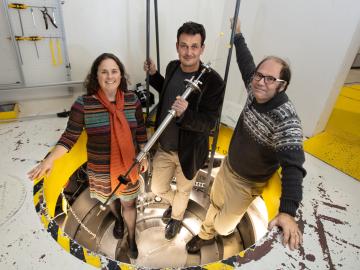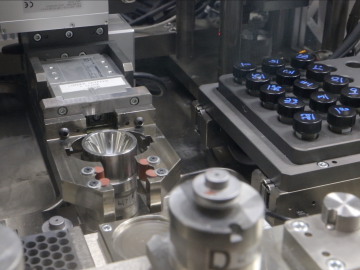
Filter News
Area of Research
- (-) Computer Science (9)
- (-) Neutron Science (38)
- (-) Nuclear Science and Technology (7)
- Advanced Manufacturing (7)
- Biology and Environment (33)
- Computational Biology (2)
- Computational Engineering (2)
- Electricity and Smart Grid (3)
- Energy Science (130)
- Functional Materials for Energy (1)
- Fusion and Fission (8)
- Fusion Energy (3)
- Isotope Development and Production (1)
- Isotopes (4)
- Materials (94)
- Materials Characterization (1)
- Materials for Computing (18)
- Materials Under Extremes (1)
- National Security (25)
- Quantum information Science (1)
- Sensors and Controls (1)
- Supercomputing (93)
- Transportation Systems (2)
News Topics
- (-) Artificial Intelligence (12)
- (-) Grid (2)
- (-) Materials Science (27)
- (-) Space Exploration (8)
- (-) Summit (7)
- (-) Transportation (5)
- 3-D Printing/Advanced Manufacturing (10)
- Advanced Reactors (11)
- Big Data (6)
- Bioenergy (8)
- Biology (7)
- Biomedical (16)
- Biotechnology (1)
- Buildings (1)
- Chemical Sciences (3)
- Clean Water (2)
- Composites (1)
- Computer Science (28)
- Coronavirus (11)
- Cybersecurity (3)
- Energy Storage (8)
- Environment (9)
- Exascale Computing (1)
- Fossil Energy (1)
- Frontier (1)
- Fusion (9)
- High-Performance Computing (4)
- Hydropower (1)
- Isotopes (5)
- Machine Learning (6)
- Materials (14)
- Mathematics (1)
- Microscopy (3)
- Molten Salt (4)
- Nanotechnology (10)
- National Security (2)
- Neutron Science (122)
- Nuclear Energy (38)
- Physics (10)
- Polymers (1)
- Quantum Computing (1)
- Quantum Science (9)
- Security (2)
Media Contacts

To better determine the potential energy cost savings among connected homes, researchers at Oak Ridge National Laboratory developed a computer simulation to more accurately compare energy use on similar weather days.

Scientists at the U.S. Department of Energy’s Brookhaven National Laboratory have new experimental evidence and a predictive theory that solves a long-standing materials science mystery: why certain crystalline materials shrink when heated.

If humankind reaches Mars this century, an Oak Ridge National Laboratory-developed experiment testing advanced materials for spacecraft may play a key role.

Oak Ridge National Laboratory is training next-generation cameras called dynamic vision sensors, or DVS, to interpret live information—a capability that has applications in robotics and could improve autonomous vehicle sensing.

Researchers at Oak Ridge National Laboratory are taking inspiration from neural networks to create computers that mimic the human brain—a quickly growing field known as neuromorphic computing.

A study led by Oak Ridge National Laboratory explored the interface between the Department of Veterans Affairs’ healthcare data system and the data itself to detect the likelihood of errors and designed an auto-surveillance tool

Scientists have discovered a way to alter heat transport in thermoelectric materials, a finding that may ultimately improve energy efficiency as the materials

Oak Ridge National Laboratory is using artificial intelligence to analyze data from published medical studies associated with bullying to reveal the potential of broader impacts, such as mental illness or disease.

By automating the production of neptunium oxide-aluminum pellets, Oak Ridge National Laboratory scientists have eliminated a key bottleneck when producing plutonium-238 used by NASA to fuel deep space exploration.

A tiny vial of gray powder produced at the Department of Energy’s Oak Ridge National Laboratory is the backbone of a new experiment to study the intense magnetic fields created in nuclear collisions.


